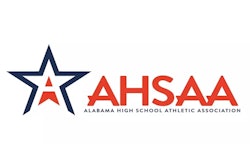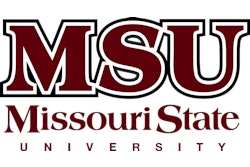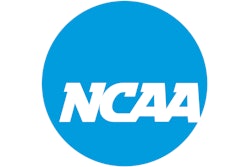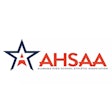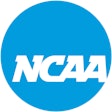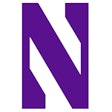Copyright 2018 N.Y.P. Holdings, Inc.
All Rights Reserved
The New York Post
During the 2014-2015 NFL season, Erica Wilkins had a banner rookie year as a Dallas Cowboys Cheerleader [DCC]. Then 22, the Friendswood, Texas, native was one of just 16 women to make the team's "show group," an elite squad made up of the best technical dancers on the team. She appeared solo on the cover of the group's swimsuit calendar, was deemed a star on a reality show about the team, and performed onstage with Blake Shelton and Usher.
Her total annual earnings? About $4,700 after taxes.
"Yes, it is prestigious," Wilkins, now 26, told The Post of cheering for the Cowboys. "But at the end of the day, prestige doesn't pay my rent. I can't walk down to my leasing office and hand them my uniform for the month."
Now, Wilkins, whose career ended in August 2017, is suing the Cowboys organization for lost wages. In the suit, she claims that cheerleaders were paid less than the team's mascot — a costumed cowboy called Rowdy, and played by a man who reportedly makes $65,000 a year plus commission. Cheerleaders, meanwhile, are paid $8 per hour for practices — just above minimum wage — and flat rates for games and appearances, such as calendar signings.
Wilkins also claims she worked hours — many of them in AT&T Stadium, team owner Jerry Jones' $1.2 billion football temple — for which she wasn't compensated, and that she wasn't paid overtime for hours worked in excess of 40 per week.
She's not the only ex-cheerleader on a crusade for change. Earlier this month, five former Houston Texans cheerleaders sued that team for failing to compensate them fully and for creating a hostile work environment. Former cheerleaders on the Washington Redskins, Miami Dolphins and New Orleans Saints have also filed similar complaints.
But this is the first time the behemoth that is the Dallas Cowboys, beloved as "America's Team," has entered the conversation. The organization's cheerleaders make up what is easily the most legendary and high-profile squad in the NFL, and certainly the only one to have had two TV movies made about them (in 1979 and 1980) and to have had their uniform — that iconic blue-and-white vest and shorts look — added into the Smithsonian's collection.
Wilkins, who doesn't call herself a feminist, said she is "pursuing justice" for other women who will be part of that legacy one day.
"I could've settled with the Cowboys for just my back wages and unpaid wages that they owed me — they offered that," she said. "But I am not willing to settle . . . My goal is to help other cheerleaders, and women as a whole."
The daughter of an electrical-engineer father and a dance-instructor mother, Wilkins wanted to be a DCC since "seventh or eighth grade. My mom ran a dance studio, and she had a couple of students that went on to become Dallas Cowboys Cheerleaders."
At a dance competition when she was 16, Wilkins was approached by a DCC scout.
"She was surprised to learn I was only 16 and not 18," she recalled. "She followed me and asked me to audition at 18, but I wanted to go to college first."
Wilkins went on to attend Louisiana State University, where she was an LSU Tiger Girl, graduating in 2014 with a degree in mass communications.
The scout "kept in touch throughout the years," she said. "She would reach out, saying, 'Hey, don't forget about us, we want you.' "
So, after graduation, Wilkins headed to Dallas to try out — and wowed the judges, as seen on the CMT-channel show "Dallas Cowboy Cheerleaders: Making the Team." While video of her performance played, Kelli Finglass, the squad's longtime director, said, "There are rookie candidates that are stronger than the veterans . . . I thought Erica was a 'wow' solo."
Of the 500 women who auditioned, Wilkins was one of just 43 chosen for the two-month training camp. (In the end, some 36 ladies — including performers from the previous year — make the squad.)
"There are women who quit their day jobs just for training camp because it is so strenuous and so draining," she said.
She not only made the cut, she was named to the elite 16-person "show group."
"Show group is coveted because that's the group that gets to go on the USO tours, and also any performances that are outside of the game-day setting," Wilkins explained. Despite the prestige, cheerleaders were not always paid for the time spent prepping for those appearances.
Wilkins made her rent by working part-time as a technician at a cryotherapy spa — which, combined with her new DCC schedule, left her little time to see friends or date.
"[Being on the squad] is expected to take priority over your job and your personal life," said Wilkins, who is currently single.
"Practice officially starts at 7 p.m. Monday through Friday. But you better be there by 6 or 6:30 at the latest, in the locker room practicing before practice. Sometimes we might have a Monday off if the game fell on the Sunday," she said.
Rehearsals would last between three and six hours. And there is no showing up in a ponytail and sweatpants; cheerleaders are required to come "camera-ready," with styled hair and full makeup.
For practices, Wilkins said she was paid $8 an hour. For appearances, she was allegedly paid a flat fee of $100 her first year, $200 her second and $300 her third (pay increases are capped at $500). She says show-group appearances were capped at $250, no matter a member's tenure.
(The Cowboys organization had no comment for this story.)
On game days, Wilkins earned a flat rate of about $200. "We had to show up hair- and makeup-ready . . . five to six hours before game time," she said. There were performances outside the stadium before the game, as well as some at halftime and, of course, throughout the game. Afterward, they would often meet with squad coaches. "You're looking at a 12-hour day," she said.
While filming the CMT show, the cheerleaders were paid by the Cowboys organization for practice hours as usual, "but the clock stops as soon as we stop dancing," said Wilkins. She added that the ladies had to wait around and film one-on-one interviews while judges deliberated — unpaid. "I've been there as late as 3 a.m.," she said. (The network had no comment.)
Per CMT, the show — which has aired for 12 seasons — averaged 3.3 million weekly viewers last season.
Cheerleading is not just a September-to-February job. During the NFL off-season, when there were fewer practices and appearances, "I got a paycheck [for an appearance] one time, not kidding, that was $12 and some odd cents. And I said, 'Great, this will maybe buy me some Chipotle.' "
Complaining isn't an option.
"If you're the one person asking questions, you might not get put on appearances," Wilkins said. "You might get pushed back in the formations" — meaning, losing a plum position at the front of a performance.
"People just live in a constant state of fear. But everyone's too afraid to say anything because, unlike the players, we don't sign a contract that guarantees us anything."
Also unlike the players, they are expected to look a certain way. And that iconic Dallas cheerleader image — lustrous manes and tanned, toned abs — doesn't come cheap.
"We don't have a stipend for anything," Wilkins said. "[Management] gives you a rookie makeover, and once you make the team you're required to maintain that look. So if they give me highlights and extensions, which they did, I'm then expected to pay for the upkeep of that."
Wilkins noted that the squad does have a local hair-salon sponsor, but the women are required to tip for whatever the service would've cost: "For me, it was probably close to $150 a month." She also paid $10 to $15 out of pocket for spray tans once or twice a month, year-round.
The ladies also have to wash their own uniforms, unlike the players.
Wilkins said she and her teammates were "under a microscope. You are required to maintain your audition weight . . . unless they tell you otherwise. If they say you have to lose five pounds, you need to do that."
But during her tenure, cheerleaders didn't have access to a gym or fitness memberships, and were not allowed to use the NFL team's facilities.
Cheerleaders who appeared in the squad's swimsuit and sideline calendars weren't even given a free copy, Wilkins said.
"We had to buy them for ourselves and our friends and family," she said. "[The Cowboys organization is] selling our image, our likeness — images of our bodies that we work very hard to keep in shape — and they're the only ones making the profit."
Learning that Rowdy, the Cowboys' mascot, makes thousands more than the cheerleaders added fuel to Wilkins' fire.
"I was on an appearance one time, and talking to the Rowdy. He basically said, 'I book my own appearances a lot of times, so . . . I can make up to six figures.' " After doing a bit of research, Wilkins discovered that the man who plays Rowdy makes an annual salary of $65,000. "I was definitely stunned, shocked," she said.
Last year, Wilkins suffered a neck and shoulder injury. Soon after, her time with the Cowboys ended. While she loved her time on the team, she sees her injury as a blessing that has allowed her to become a crusader. "I believe that that was God giving me this freedom that I needed to speak out," she said.
"We're hardworking women, we're well- educated," she said of herself and her former squadmates. "There are women who are teachers, there are women who are medical assistants working in surgeries all day long . . . These are smart women."
She recalled how one, when retiring from the squad, told the organization: "It's embarrassing that I have a college degree and I work two jobs, this being one of them, and I still have to ask my parents for help."
Wilkins added that the message she wants to send is that cheerleaders "bring so much value to this organization and we deserve to be valued as individuals, and paid.
"The issue isn't whether they can pay us — of course they can . . . it's that they should," she said. "I'm proud to have been a DCC. I'm not trying to make them look bad. I'm presenting them with an opportunity to be the good guys here . . . for them to be trendsetters and to set the precedent for other NFL teams across the board."
Read More of Today's AB Headlines
Subscribe to Our Daily E-Newsletter
Terms and Conditions Privacy Policy

















